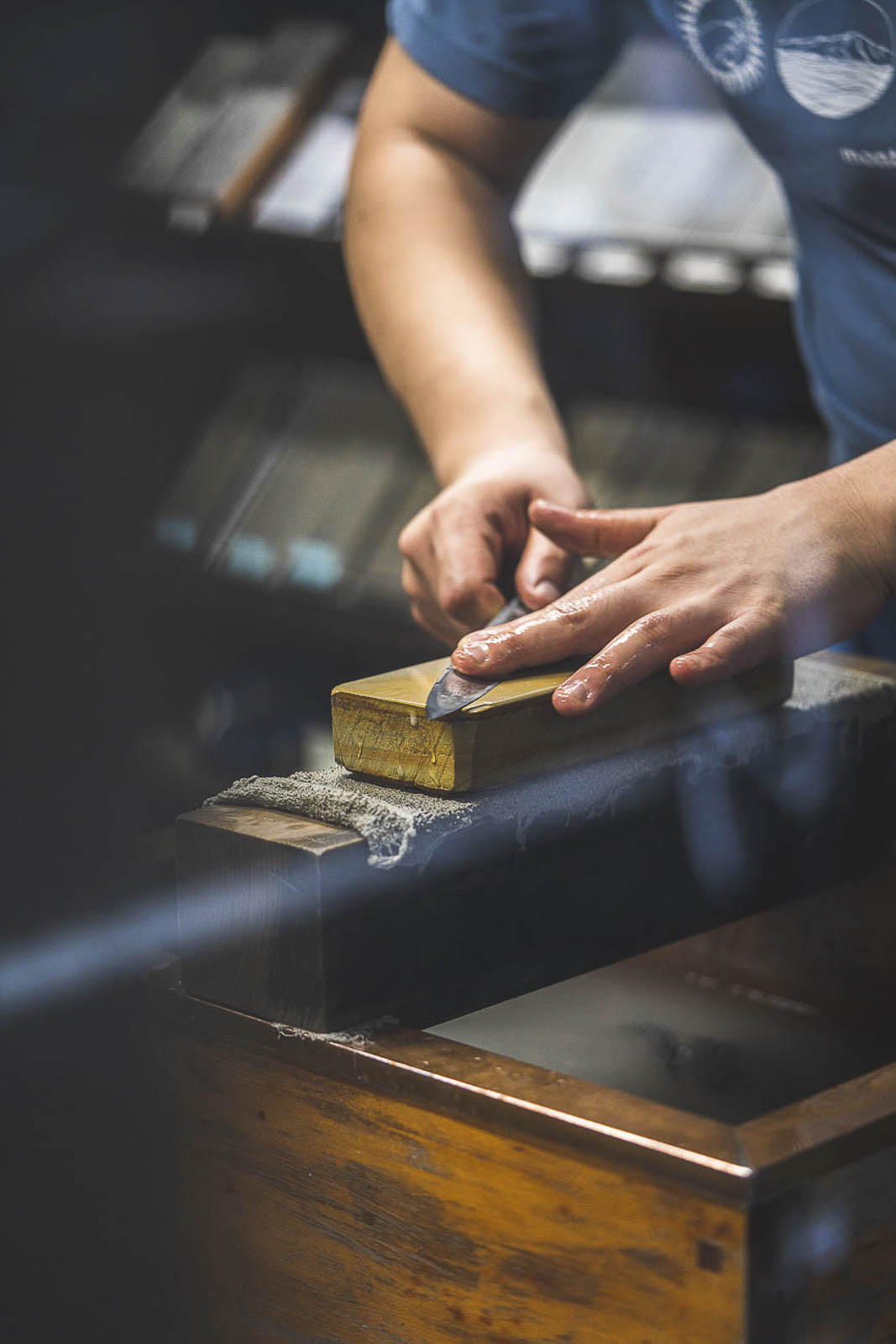
Caring for your Japanese Chef Knife
Japanese chef knives need a little more care than your regular off the shelf knives. But don’t be afraid, looking after them is easier than you think.
So you’ve taken the plunge and bought your first ‘real’ chef knife. As you gaze at it with a smile, it can be somewhat daunting to use your Japanese chef knife for the first time. As with all high-performance tools, your new knife will need some love and care to ensure it performs to the highest level for many years to come. The blades construction and steel type will determine the level of care required, as the higher carbon steel Japanese chef knives require more attention than others.
The main question we get when someone new to carbon steel (Blue/White) knives uses theirs for the first time is one of shock being, “Why has my blade changed colour?!”
High-carbon steel Japanese chef knives (whether clad in a stainless steel or not) are knives that do not contain any (or very little) Chromium, the main element that give stainless knives their rust resistance. As such, these blades are prone to oxidation or discolouring from the first use.
Fear not, as the patina is only superficial, and will actually help prevent against rust in the long term. Certain foods like meats, acidic fruits and vegetables, and also condiments like mustard will all produce wildly different colours and patterns as they emerge and leave their mark on your blade. This is completely normal, and is all part and parcel of owning a carbon steel knife.
Cutting
When cutting using your new knife, ensure that only a straight up/down motion is used, as these knives use an extremely hard steel with a very fine edge. Any twisting or torquing of this extremely thin steel will chip or break your blade. Certain food textures (chicken, meat etc) will sometimes not respond to cuts whereby your press directly down onto the food with the blade. Try either a push or pull motion to ensure effortless cuts.
We advise to only cut on wooden boards! There is conjecture as to whether plastic boards are safe, but we prefer to err on the side of caution with this one. Due to the softness of some plastic boards, your knife will occasionally sink slightly into the board with each cut. If the blade is twisted or moved at this contact point, damage has been known to occur.
It almost goes without saying, please do not use your knife to cut any bones, stoned fruits, or any other hard objects.
Washing
A soft dishcloth and hot water is all you need to keep your blade clean. Use a small amount of dish soap if desired, but avoid scourers and anything abrasive.
Absolutely no dishwasher use!
For blades that have a core or are made from a high carbon steel such as Blue, White Steels, these will need to be wiped down immediately as rust spots can develop within minutes as they contain no stainless elements.
Storage
You new knife deserves better than crashing around in your cutlery drawer, so keep them in the original box it came in. Even better, pick up a leather-clad magnetic knife holder to showcase your knives in the open (away from mischievous pets and children) where they belong.
Add a dab of Camellia Oil between uses for carbon steel knives, as this will prevent any moisture reaching the steel and causing rust spots.
Sharpening
Keeping you new knife sharp may take some practice, so we recommend a whetstone with two side for beginners, one with a rougher grit of 1000 to remove steel from the edge, and then a finer grit like 6000 to polish the edge.
We recommend practicing on a cheaper knife first, until you can hone your skills and be confident enough to attempt to sharpen your more expensive knives. We’ll write up a complete sharpening guide soon. For now, there are plenty of great videos on YouTube like this one to quickly pick up the skills required.
If you ever need any further information on how to care for your new knife, please reach out via any of the channels available!
